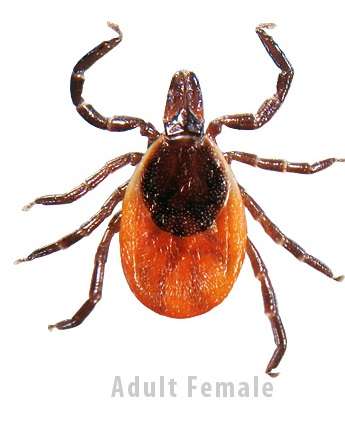Fitness
Ticks, mosquitos pose new challenge for public health – CK News Today

Chatham-Kent’s acting medical officer of health is warning that hotter temperatures will mean a higher risk of Lyme disease.
But that shouldn’t prevent people from still enjoying the great outdoors this summer.
Lyme disease is cause by bacteria in a black legged tick bite.
The CK Board of Health was told at its monthly meeting on Monday afternoon that the tick surveillance and control program started this month with staff carrying out active tick dragging to reduce the risk of human exposure and inform Lyme disease control efforts.
Program Manager of Healthy Environments Cara Robinson said staff visit possible black-legged tick habitats and areas of concern and drag for ticks using cloth that ticks can stick to. Robinson explained that collected ticks are identified and black-legged ticks are sent to a laboratory to be tested for the bacteria that causes Lyme disease.
“These efforts provide us with information regarding black-legged tick prevalence and possible habitat expansion,” said Robinson.
Public Health Ontario has recently confirmed a newly established risk area for black-legged ticks and Lyme disease in Chatham-Kent. Established risk areas are locations where black-legged ticks are known to be and where people have the potential to encounter infectious ticks. The new local risk area is centralized in a wooded lot northeast of Thamesville. The risk area covers a 20-kilometre radius from the woodlot and includes Bothwell, Dresden, Highgate, Kent Bridge, Ridgetown, and Thamesville, according to CK Public Health.
The new area is in addition to two existing risk areas within Chatham-Kent centralized in Rondeau Provincial Park, which includes Blenheim, Erieau, and Ridgetown, while the other area is centralized in Point Pelee National Park and includes Wheatley.
The province formally expanded human surveillance of tick-borne Diseases of Public Health Significance last summer to include Anaplasmosis, Babesiosis, and Powassan virus in addition to Lyme disease, meaning that human cases of these diseases must be reported to local public health units by healthcare providers for investigation. The public health unit in CK said this enhanced surveillance measure improves overall tracking of these diseases and allows public health officials to map higher-risk exposure locations to better inform the public.
Dr. Shanker Nesathurai said tick-borne illness was just a footnote when he was in medical school 35 years ago, but it’s more prominent now because black-legged ticks have spread across the province.
“What’s particularly awful about the Powassan virus is that it causes encephalitis, swelling of the brain. Swelling of the brain is actually terrible and even if you recover from Powassan virus, a good number of people have life-long disabilities,” said Dr. Nesathurai. “The change is that temperatures have got warmer and it’s indisputable that the habitat of the black-legged tick has become more hospitable in Ontario. They live in grassy, wooded areas, they need the right temperature, the right moisture, the right vegetation, and you get more black-legged ticks.”
The doctor reminds the community they can bring ticks to the health unit in Chatham for identification and education.
Mosquito trapping efforts across Chatham-Kent have also started as part of the control program.
Mosquitoes are actively collected from 10 trap sites on a weekly basis from mid-June until mid-September and are sent to a laboratory for identification and testing for West Nile virus and Eastern Equine Encephalitis. Any positive results will be communicated publicly along with recommended protective measures, said CK Public Health.
Updated West Nile virus mosquito surveillance data will be available here weekly with mosquito identification and testing results from June until September.
Dr. Nesathurai said climate change is changing the mosquito and tick game and people need to protect themselves.
“These mosquito and tick surveillance programs are proactive public health measures that help to enhance community safety,” said Dr. Nesathurai. “By enhancing surveillance efforts and providing transparent reporting, CK Public Health aims to empower residents with the information they need to reduce the risk of vector-borne illnesses.”
People can do a few things to protect themselves against illness from mosquitos and ticks. Dr. Nesathurai recommends wearing long pants and long-sleeve shirts, using insecticide, and checking yourself for ticks before you come indoors. He said black-legged ticks are easier to spot if you’re wearing bright coloured clothing.


)






